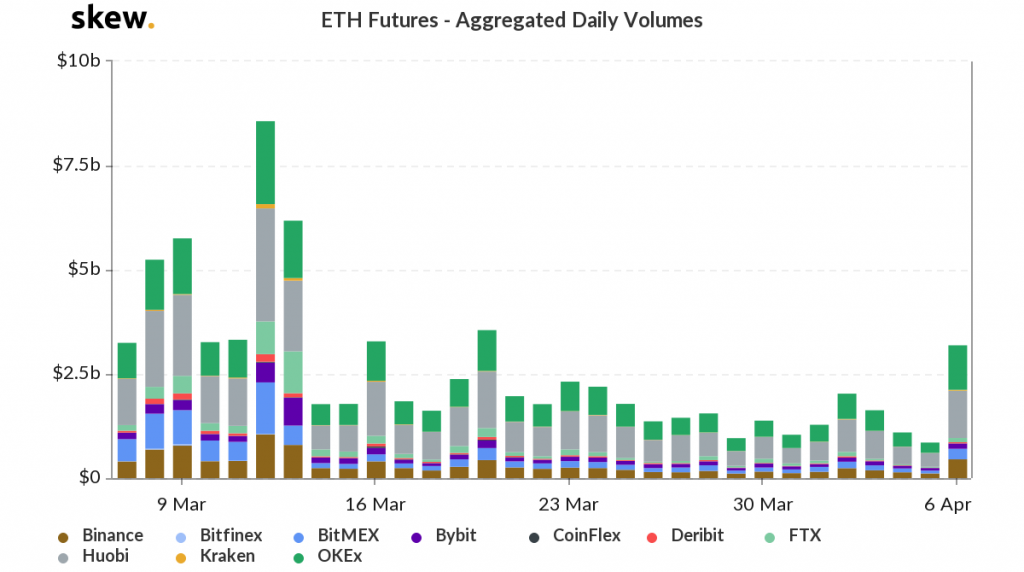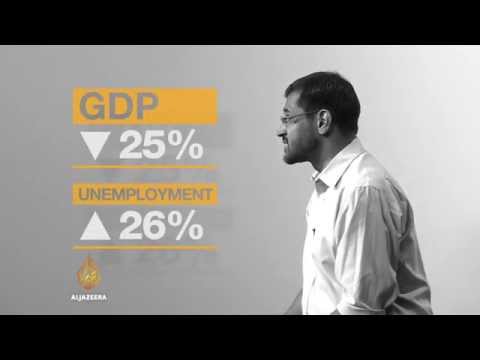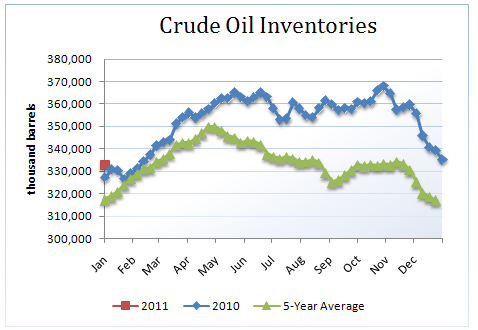Contents:


So, the investment will be made by the investor according to his own capacity on the basis of this ratio. The risk/return ratio help investors assess whether a potential investment is worth making. A lower ratio means that the potential reward is greater than the potential risk, while a low ratio means the opposite. By understanding the risk/return ratio, investors can make more informed decisions about their investments and manage their risk more effectively. Note that the risk/return ratio can be computed as one’s personal risk tolerance on an investment, or as the objective calculation of an investment’s risk/return profile.
- A security’s price may increase or decrease too quickly for an investor to sell it at the desired price, so the actual gain or loss may be greater than the potential gain or loss.
- The second ETH trade is less risky than the first ETH trade because the take profit is set at $3,000, which ETH is more likely to reach before it reaches $3,400.
- However, it’s equally important to balance risk and prospective reward.
- For every trade, you should determine how many you can afford to lose in a particular trade and how many you can lose today before you finish your trading.
- Finally, it is important to note that you can withdraw your consent to take on a certain level of risk at any time.
This Website makes no representations or warranties as to the fairness, completeness or accuracy of Information. There is no commitment to update or correct any information that appears on the Internet or on this Website. Information is supplied upon the condition that the persons receiving the same will make their own determination as to its suitability for their purposes prior to use or in connection with the making of any decision.
Risk Reward Ratio: How to Assess Your Risk Tolerance for Investments? (Updated
It’s almost impossible to determine the win ratio of a future trade or activity, and you can only work with past data. Nevertheless, using the risk/reward ratio with another indicator can be an extra tool in a trader’s toolkit. It’s fair to say the risk/reward ratio is one of the most important things you should use if you want to become a successful trader. It helps you calculate your losses and profits and gives you another reason to think twice before opening a trade.
Safe and sound: how risk-reward ratio can improve your money … – Capital.com
Safe and sound: how risk-reward ratio can improve your money ….
Posted: Thu, 10 May 2018 07:00:00 GMT [source]
The risk/reward ratio (R/R ratio or R) calculates how much risk a trader is taking for potentially how much reward. In other words, it shows what the potential rewards for each $1 you risk on an investment are. The difference between a trade entry point to a stop-loss and a sell or take-profit order is measured by the risk reward ratio. These two can be compared to determine the ratio of reward to risk or profit to loss.
The information does not constitute reward to risk ratio formula or financial advice or advice to buy or sell, or to endorse or solicitation to buy or sell any securities or other financial instrument for any reason whatsoever. Nothing on the Website or information is intended to constitute legal, tax or investment advice, or an opinion regarding the appropriateness of any investment or a solicitation of any type. You are therefore advised to obtain your own applicable legal, accounting, tax or other professional advice or facilities before taking or considering an investment or financial decision. The risk-reward ratio is most commonly used by stock traders, investors and others in financial services to evaluate financial investments such as stock purchases.
Using the Risk/Reward Calculation
A stop-limit order is a conditional trade over a set time frame that combines features of stop with those of a limit order and is used to mitigate risk. In general, the greater the risk, the greater the expected return demanded. The relationship between these tools is crucial for calculating the R/R ratio of each trade, as we’ll explain below. The Website specifically prohibits you from usage of any of its facilities in any countries or jurisdictions that do not corroborate to all stipulations of these Terms of Use. The Website is specifically for users in the territory of India.
- Lower the risk/reward ratio i.e. below 1 is considered as good ratio since the return on investment outweighs the risk.
- The loss here will be Rs. 10 or Rs. 20 multiplied by the number of shares purchased.
- Risk/reward is always calculated realistically, yet conservatively.
- Fundamental analysis and market conditions must also be taken into account when making trading decisions.
- Incorporating chart patterns into your trading strategy can effectively manage your risks while maximizing your profits.
Investing money into the markets has a high degree of risk and you should be compensated if you’re going to take that risk. If somebody you marginally trust asks for a $50 loan and offers to pay you $60 in two weeks, it might not be worth the risk, but what if they offered to pay you $100? The risk of losing $50 for the chance to make $100 might be appealing. Calculate risk vs. reward by dividing your net profit by the price of your maximum risk. Michael Boyle is an experienced financial professional with more than 10 years working with financial planning, derivatives, equities, fixed income, project management, and analytics. Above, calculation, suggests Microsoft is the better investment as per the Risk/Reward ratio.
Conclusion: The Key Role of The Risk to Reward Ratio in Trading
The risk-reward ratio is the simplest and most powerful trading metric because it mathematically calculates the potential upside and downside of each trade, allowing you to make a calculated trade. It is arguably more important than the “win rate” because it can be applied to all trades, regardless of your trade history. ABCL and ABC Companies are engaged in a broad spectrum of activities in the financial services sectors. Any recommendation or reference of schemes of ABSLMF if any made or referred on the Website, the same is based on the standard evaluation and selection process, which would apply uniformly for all mutual fund schemes. Information about ABML/ABFL, its businesses and the details of commission structure receivable from asset management companies to ABML/ABFL, are also available on their respective Website.

A lower risk/return ratio is often preferable as it signals less risk for an equivalent potential gain. The risk/reward (R/R) ratio calculates the units of return you can expect in exchange for units of risk. If you have a 0.3 R/R ratio, this means you stand to gain $3 for every $1 you risk.
Open Level Up Bonus account in web or mobile version of FBS Personal Area and get up to $140 free to your account. There are thousands if not millions of assets in the world, starting from the well-known euro, dollar, gold, bitcoin, and others. In the case of trading with RSI, our Take Profit should be near the closest resistance line, which is $1833. This way, you’ll know for sure that you won’t risk more than you are ready to lose. Rayner Teo is an independent trader, ex-prop trader, and founder of TradingwithRayner.
The ratio depends upon the quality of the investor’s research and ability to gauge risk. In a project scenario, risk represents the value of resources being put toward the project. The reward is the monetary value of the gains that could be reaped from completing the project. You may want to test the environment with virtual money with a Demo account.
Investing with the amount that suits your risk tolerance and financial goals is essential for success. 20 Best Index Funds to Invest in India in April What is an Index Fund? An index fund is a type of mutual fund or exchange-traded fund that… 10 Best Gold ETFs in India to Invest in April Gold ETFs or Gold Exchange Traded Funds are passively managed funds that track the price of physica… Top 10 Chit Fund Schemes in India in Chit funds are one of the most popular return-generating saving schemes in India.
Fault management is the component of network management that detects, isolates and fixes problems. Update it to the latest version or try another one for a safer, more comfortable and productive trading experience. Beginner Forex book will guide you through the world of trading.
Individual investors can use the risk/reward ratio when considering whether to make a trade. You can also use the ratio to make decisions about where to set your price targets or stop-loss orders to create a trade that has the risk/reward potential you desire. In the trading example noted above, suppose an investor set a stop-loss order at $18, instead of $15, and they continued to target a $30 profit-taking exit. By doing so they would certainly reduce the size of the potential loss , but they will have increased the likelihood that the price action will trigger their stop loss order.
How To Understand ‘Price Earnings (P/E) Ratio’ – Forbes
How To Understand ‘Price Earnings (P/E) Ratio’.
Posted: Wed, 22 Mar 2023 07:00:00 GMT [source]
Well, you want to trade Support and Resistance levels that are the most obvious to you. However, this reduces your trading opportunities as you’re more selective with your trading setups. Well, it should be at a level where it will invalidate your trading setup.
The investor puts it in place, with the order to sell the investment if it falls to a specific value. A stop-loss order essentially puts a floor on the amount of loss an investor is willing to take before selling an investment. In a risk-reward ratio, risk is the amount of money that could be lost in the investment. In a stock purchase, that amount is the actual capital value, or the actual dollar amount, that could be lost. In this case, they’d only have to win two trades out of ten to be profitable.
Risk/Reward Ratio: What It Is, How Stock Investors Use It
Risk/Reward ratio is an important tool for trader/investor to understand the level of risk involved in investment decisions compared to returns. Lower the risk/reward ratio i.e. below 1 is considered as good ratio since the return on investment outweighs the risk. In general, short-term investors and traders use this ratio to select from a variety of categories of investments.
Estimating the expected return and potential loss is not an exact science, and the actual amount of risk and return may differ from your estimates. Investors should also consider their own risk tolerance when evaluating the potential risk of an investment, as the amount of risk they are willing to take on can vary depending on their personal circumstances and investment goals. These methods can help investors identify factors that could impact the investment’s value and estimate the potential downside. The risk/reward ratio is often used as a measure when trading individual stocks. The optimal risk/reward ratio differs widely among various trading strategies.
Risk-Return Tradeoff: How the Investment Principle Works – Investopedia
Risk-Return Tradeoff: How the Investment Principle Works.
Posted: Sun, 26 Mar 2017 06:32:23 GMT [source]
These predetermined levels, which are often used as part of a disciplined trader’s exit plan, are aimed to limit emotional trading to a minimum and are vital to risk management. The risk-reward relationship helps determine whether the expected returns outweigh the risk and vice versa. In short, the RR ratio assists traders in determining whether a particular trade is worthwhile. The ratio is computed by dividing the amount a trader stands to lose if the price of an asset moves unexpectedly by the amount of profit the trader anticipates making when the position is closed . Every trader/investor according to his /her risk appetite generally decides the Risk/Reward ratio. In general high risk result in high reward but there is an investment option where this statement is not true.

Thus, on every share, you’re taking a potential risk of Rs. 10 for a potential profit of Rs 20. Consider the same investment with a stop-loss at $50, but with the same expected profit of $100. That’s 50 for the risk, 100 for the reward, or 50/100, which is .5-to-1. However, risk is typically represented as 1 in the risk-reward ratio, so .5-to-1 is expressed as 1-to-2. The risk-reward ratio is used in PPM to quantify the potential risks and benefits of a project. Project leaders use the ratio to assess the feasibility of the project as a whole, as well as for assessing specific components of the project.
You may receive e-mails /communications/notifications from the Third Party Services Providers regarding facilities updates, information/promotional e-mails/SMS and/or update on new product announcements/services in such mode as permitted under law. Immediately of any unauthorized use or access of your password or Account, or any other breach of security. The Website will not be liable for any loss that you may incur as a result of someone else using your password or account, either with or without your knowledge. Is owned by Aditya Birla Management Corporation Private Limited and the same is used herein under the License by Aditya Birla Capital Limited and its subsidiary companies (collectively hereinafter referred to as “ABC Companies”). Aditya Birla Capital Limited is the holding company of all financial services businesses.

Comentarios recientes